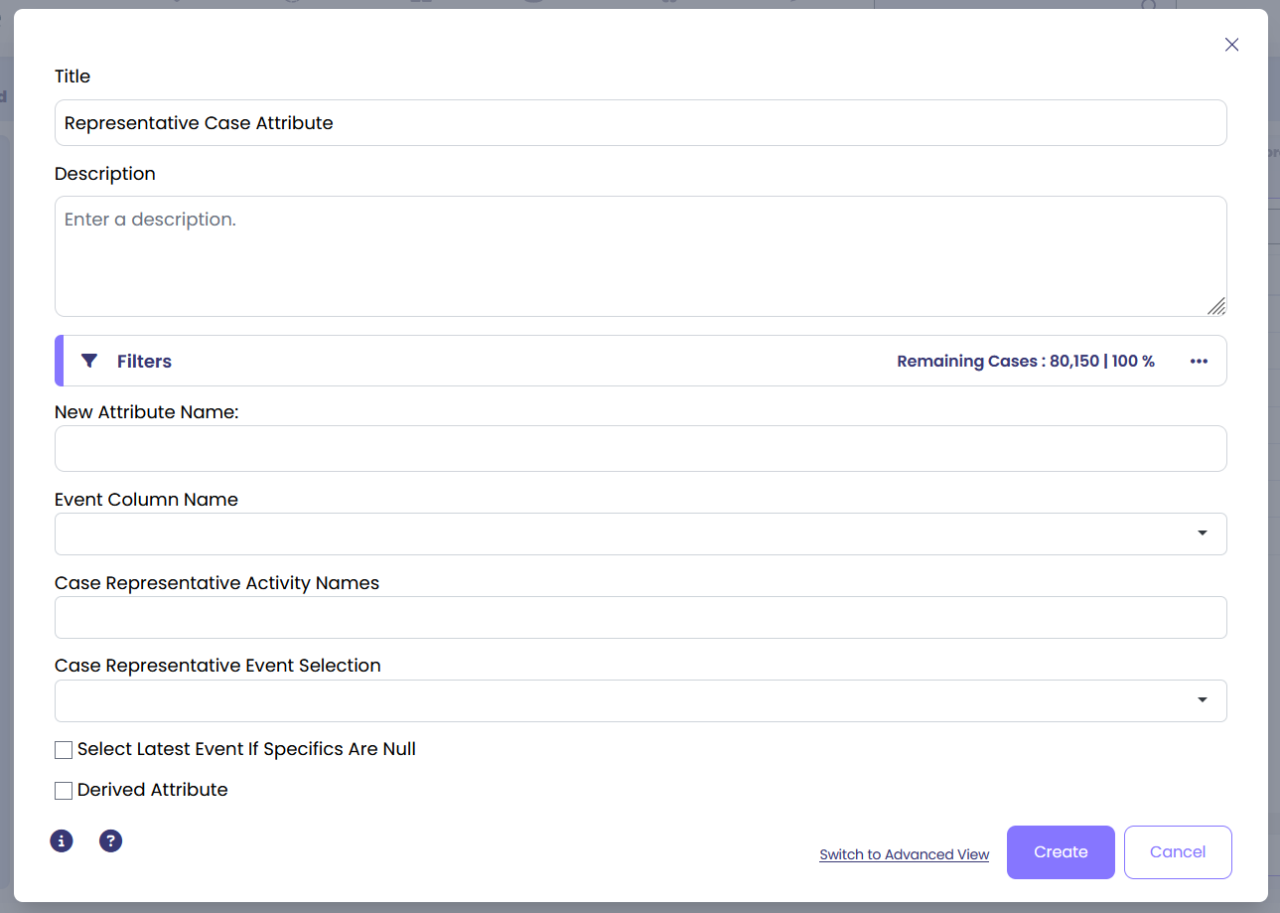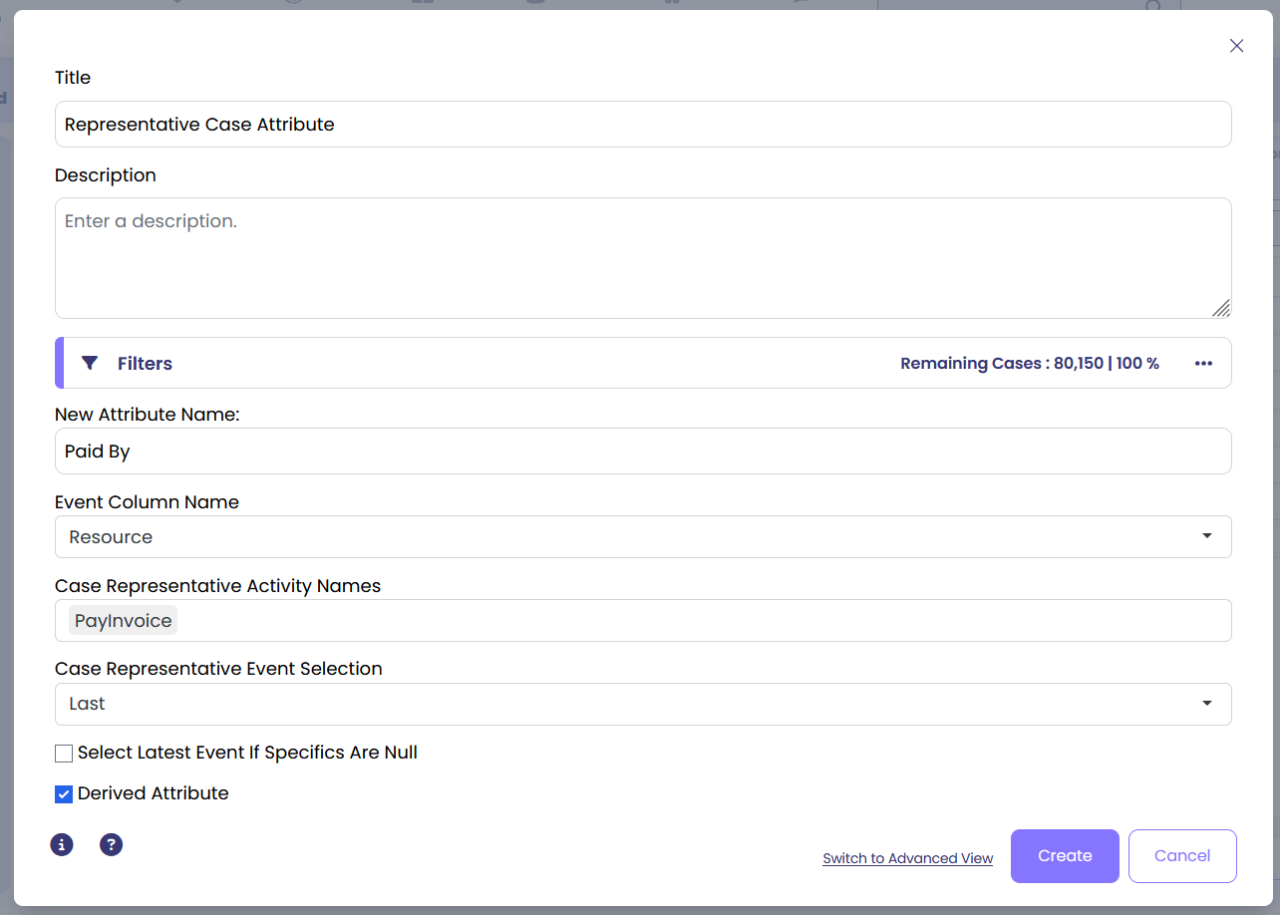Overview
This enrichment creates a case-level attribute by extracting the value of an event attribute from a specific activity occurrence within the case. You can choose to extract from either the first or last occurrence of the selected activity.
For example, you can create a case attribute that identifies which resource performed the last "Pay Invoice" activity, which customer initiated the first "Create Order" activity, or which warehouse location processed the final "Ship Order" activity in each case.
Common Uses
Use this enrichment to:
- Define who was the last resource to pay the invoice, useful for tracking payment processors
- Identify the customer who placed the order from the "Create Order" activity
- Capture the approval manager from the first approval activity in the case
- Determine the warehouse location from the last shipping activity
- Extract any event-level attribute value to create a meaningful case-level summary
Settings
Start by going to the 'Log Enrichment' engine by going to any analysis and clicking 'Log Enrichment' in the top right.

Then click 'Add New'

Then choose the enrichment block.
Configuration Options
Filter: Add any filter you like. The enrichment will define attributes only for cases that are selected by the filter. Leave empty to apply to all cases.
New Attribute Name: Specify the name of the new case attribute you are about to create. This will appear in your case attributes list after the enrichment runs.
Event Column Name: Select the event attribute that you want to extract and promote to a case attribute. For instance, select 'Resource' to define a representative Resource for the case, or select 'Customer' to identify which customer is associated with the case.
Case Representative Activity Names: Select the activity (or activities) from which to use the attribute value. For instance, select 'Pay Invoice' if you would like to identify the Resource who paid the invoice. You can select multiple activities if the attribute could come from any of several activities.
Case Representative Event Selection: Specify whether to use the attribute from the 'First' or 'Last' occurrence of the selected activity in the case:
- First: Uses the attribute value from the first occurrence of the selected activity. Use this when you want to capture who or what started a process step.
- Last: Uses the attribute value from the last occurrence of the selected activity. Use this when you want to capture who or what completed the final iteration of a potentially repeated step.
Example 1
To define who was the last resource to pay the invoice, use the following settings:
- New Attribute Name: Last Resource to Pay Invoice
- Event Column Name: Resource
- Case Representative Activity Names: Pay Invoice
- Case Representative Event Selection: Last

Click 'Create' and once you're ready click 'Calculate Enrichment' to add the new attribute to your data set.

Output
When this enrichment is executed, it creates a new case attribute with the name you specified in "New Attribute Name". The attribute value will be extracted from the specified event attribute at the selected activity occurrence.
Output Attributes
- Attribute Name: The name you specified in the configuration (e.g., "Last Resource to Pay Invoice")
- Attribute Type: Case attribute (appears in the case attributes list)
- Attribute Values: The values are copied from the selected event attribute at the specified activity occurrence
Example Output
Using the example configuration above:
- Event Column Name: Resource
- Case Representative Activity Names: Pay Invoice
- Case Representative Event Selection: Last
The enrichment creates a case attribute called "Last Resource to Pay Invoice" that contains the name of the resource who performed the last "Pay Invoice" activity in each case.
Special Cases:
- If a case does not contain any of the selected activities, the new attribute will be blank (null) for that case.
- If multiple activities are selected and a case contains more than one of them, the enrichment uses the first/last occurrence across all selected activities based on the Case Representative Event Selection setting.
Using the Output
You can use this new case attribute to:
- Filter Cases: Show only cases handled by specific resources or customers
- Create Visualizations: Display which resources process the most invoices, which customers generate the most orders, etc.
- Perform Analysis: Calculate performance metrics by resource, customer, or other extracted attributes
- Build Dashboards: Show case distributions across the extracted dimension
- Export Data: Include the representative attribute in exports for external analysis
See Also
Related enrichments:
- Calculated Attributes - Create custom calculations and transformations on attributes
- Attribute Enrichments - Overview of different attribute enrichment types
- Duration Between Two Activities - Calculate time between activities in a case
Related topics:
- Case Attributes - Understanding case-level attributes in mindzieStudio
- Event Log Structure - How events and cases are organized in process mining
- Data Enrichment Strategy - Best practices for enriching your process data